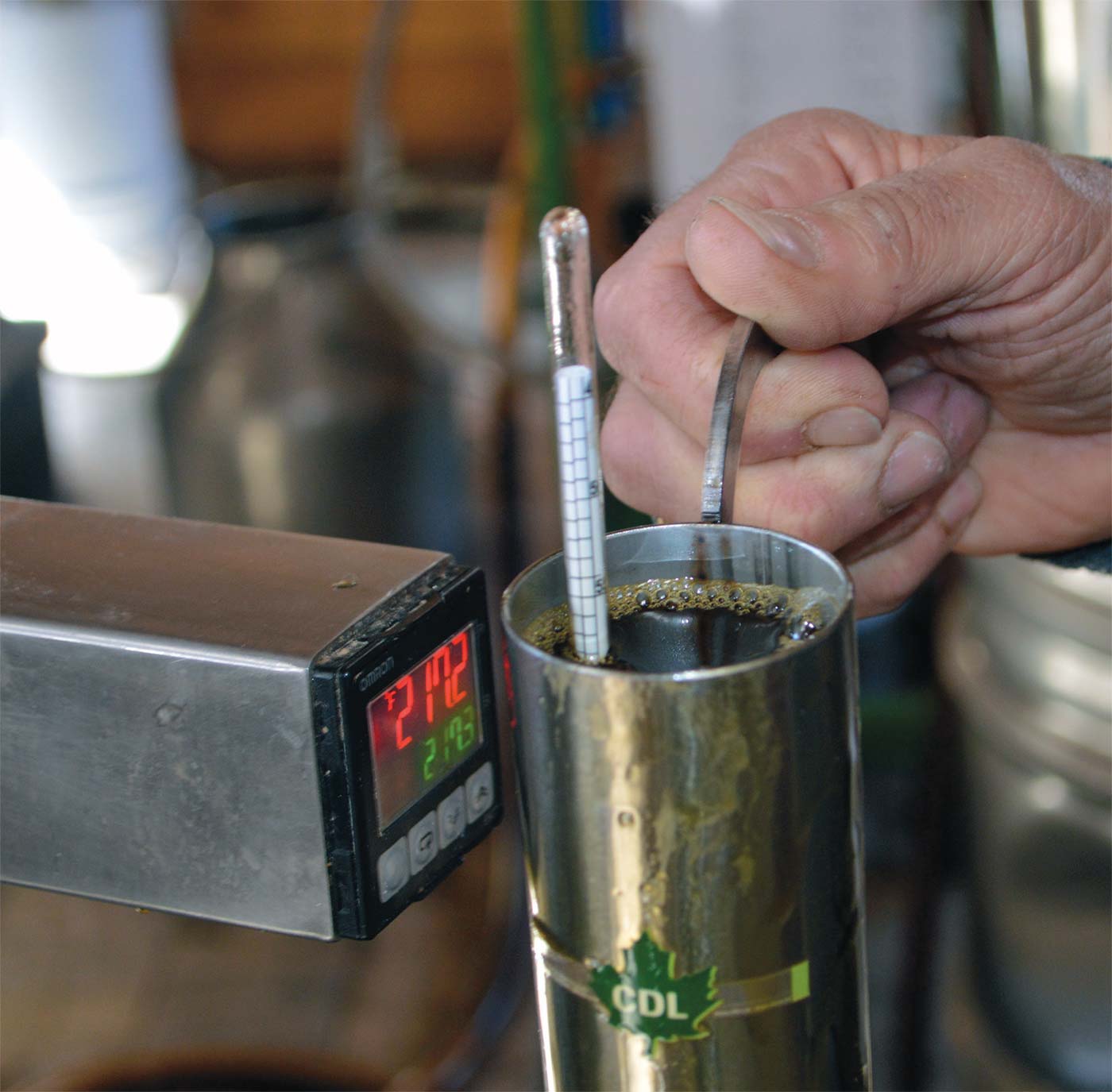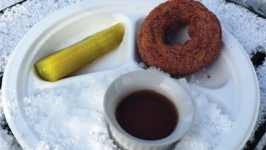Vermont: The Maple-Infused State
Pancakes, waffles, ice cream, beer, spirits, and pretty much everything in Vermont are connected to maple syrup in one way or another.
Vermont is a sweet state literally and figuratively; in every corner of the state, we have sugarmakers who collectively produce about half of the maple syrup in the United States.
Many Vermont maple producers go back generations, include the entire family in the process, and love to share their stories. They’re gracious enough to give you tours of their sugarhouses, and some allow walking and biking tours of their sugarbushes (acres of maple trees that are tapped for maple sap). Some even offer overnight stays and camping in the warmer seasons.
During the winter, you can often spot sugarmakers tapping trees, checking buckets or sap lines, and getting ready for sugaring season. Most sugarmakers are working year-round, whether it’s in the sugarbush or another part of their diversified farm or tending to off-farm work. However, springtime is the true sugaring season, the maple industry’s most important time of year. This short but sweet season typically runs from March through the middle of April and varies based on snow cover, rain, sunshine, freeze-thaw cycles, and temperatures. While sugarmakers do everything they can to make sure they’re ready for the season, the rest is up to nature.
As spring temperatures rise, the sap in maple trees begins to leak out and is collected by tubing or buckets, and then boiled down to maple syrup. The general rule of thumb is that it takes 40 gallons of maple sap to make one gallon of maple syrup.

(left) Vermont's liquid gold. (right) Steam rising from a sugarhouse, a familiar Vermont spring scene. Photos courtesy of Vermont Sugar Makers' Association.
The best way to see the sugaring process in action is to visit during Maple Open House Weekend, March 19–20 and March 26–27. More than 125 maple producers across the state offer sugarhouse and sugarbush tours, including up-close views of the sap-boiling process. Many provide maple syrup samples and other treats that include maple-frosted donuts, maple cotton candy, maple candy, and a Vermont staple: sugar on snow. Local restaurants and breweries participate in the weekend as well, serving up specialty recipes, brews, and cocktails to celebrate the season.
At a time when Vermonters and folks across the world have been home more than usual, Vermont maple has become a source of comfort and a kitchen staple to replace processed sugars for home cooking (and in those infamous pandemic cocktails!). Anywhere you might see a recipe call for brown sugar, white sugar, honey, agave (or other sweeteners) in a recipe, you can generally find a way to replace it with maple syrup, and not just in baked goods. Think coffee, peanut sauce, curries, pizza dough, baked beans, salad dressings, casseroles, and stir-fry. Start by incorporating pure Vermont maple syrup in your routine!

Sugarmaking has become high tech over the decades, complete with digitally monitored systems.
MAPLE BY THE NUMBERS
What impact does Vermont maple have on our economy? The most well-known way to track maple numbers is through the USDA crop statistics, but in general these numbers undercount the amount of maple produced in Vermont—nevertheless, they are still impressive! Even a question such as “How many maple producers are in Vermont?”—the anecdotal answer is 3,000, by a rough estimate.
In 2019, Mother Nature offered good weather, and the maple trees offered sap with pretty average sugar content, so that year’s snapshot offers a good example of how maple looks in the state.
- More than 6 million taps in Vermont maple trees
- 2.07 million gallons of Vermont maple syrup produced
- 4.18 million gallons of U.S. maple syrup produced (Vermont generated 49.5% of the total U.S. crop)
- For every dollar in sales generated by the Vermont maple industry, another $0.49 circulates in our local Vermont economy.









